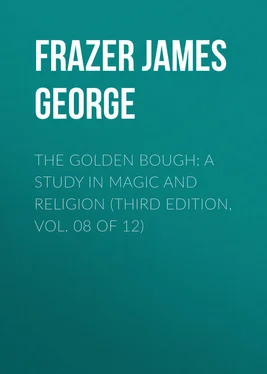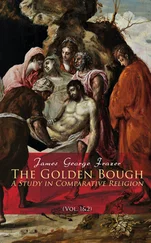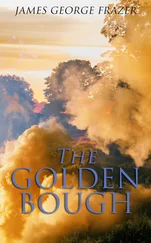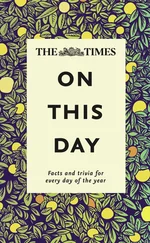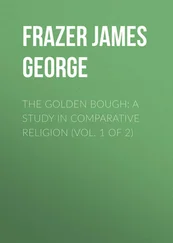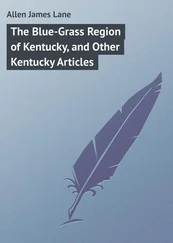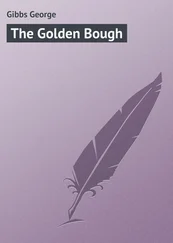James Frazer - The Golden Bough - A Study in Magic and Religion (Third Edition, Vol. 08 of 12)
Здесь есть возможность читать онлайн «James Frazer - The Golden Bough - A Study in Magic and Religion (Third Edition, Vol. 08 of 12)» — ознакомительный отрывок электронной книги совершенно бесплатно, а после прочтения отрывка купить полную версию. В некоторых случаях можно слушать аудио, скачать через торрент в формате fb2 и присутствует краткое содержание. Жанр: foreign_religion, foreign_antique, foreign_prose, на английском языке. Описание произведения, (предисловие) а так же отзывы посетителей доступны на портале библиотеки ЛибКат.
- Название:The Golden Bough: A Study in Magic and Religion (Third Edition, Vol. 08 of 12)
- Автор:
- Жанр:
- Год:неизвестен
- ISBN:нет данных
- Рейтинг книги:4 / 5. Голосов: 1
-
Избранное:Добавить в избранное
- Отзывы:
-
Ваша оценка:
- 80
- 1
- 2
- 3
- 4
- 5
The Golden Bough: A Study in Magic and Religion (Third Edition, Vol. 08 of 12): краткое содержание, описание и аннотация
Предлагаем к чтению аннотацию, описание, краткое содержание или предисловие (зависит от того, что написал сам автор книги «The Golden Bough: A Study in Magic and Religion (Third Edition, Vol. 08 of 12)»). Если вы не нашли необходимую информацию о книге — напишите в комментариях, мы постараемся отыскать её.
The Golden Bough: A Study in Magic and Religion (Third Edition, Vol. 08 of 12) — читать онлайн ознакомительный отрывок
Ниже представлен текст книги, разбитый по страницам. Система сохранения места последней прочитанной страницы, позволяет с удобством читать онлайн бесплатно книгу «The Golden Bough: A Study in Magic and Religion (Third Edition, Vol. 08 of 12)», без необходимости каждый раз заново искать на чём Вы остановились. Поставьте закладку, и сможете в любой момент перейти на страницу, на которой закончили чтение.
Интервал:
Закладка:
Still more clearly does the ox appear as a personification of the corn-spirit in a ceremony which is observed in all the provinces and districts of China to welcome the approach of spring. On the first day of spring, usually on the third or fourth of February, which is also the beginning of the Chinese New Year, the governor or prefect of the city goes in procession to the east gate of the city, and sacrifices to the Divine Husbandman, who is represented with a bull's head on the body of a man. A large effigy of an ox, cow, or buffalo has been prepared for the occasion, and stands outside of the east gate, with agricultural implements beside it. The figure is made of differently-coloured pieces of paper pasted on a framework either by a blind man or according to the directions of a necromancer. The colours of the paper prognosticate the character of the coming year; if red prevails, there will be many fires; if white, there will be floods and rain; and so with the other colours. The [pg 011] mandarins walk slowly round the ox, beating it severely at each step with rods of various hues. It is filled with five kinds of grain, which pour forth when the effigy is broken by the blows of the rods. The paper fragments are then set on fire, and a scramble takes place for the burning fragments, because the people believe that whoever gets one of them is sure to be fortunate throughout the year. A live buffalo is next killed, and its flesh is divided among the mandarins. According to one account, the effigy of the ox is made of clay, and, after being beaten by the governor, is stoned by the people till they break it in pieces, “from which they expect an abundant year.” 35 35 China Review , i. (July 1872 to June 1873, Hongkong), pp. 62, 154, 162, 203 sq. ; Rev. J. Doolittle, Social Life of the Chinese , ed. Paxton Hood (London, 1868), pp. 375 sq. ; Rev. J. H. Gray, China (London, 1878), ii. 115 sq.
But the ceremony varies somewhat in the different provinces. According to another account the effigy of the cow, made of earthenware, with gilded horns, is borne in procession, and is of such colossal dimensions that forty or fifty men can hardly carry it. Behind this monstrous cow walks a boy with one foot shod and the other bare, personifying the Genius of Industry. He beats the effigy with a rod, as if to drive it forward. A great many little clay cows are afterwards taken out of the large one and distributed among the people. Both the big cow and the little ones are then broken in pieces, and the people take the sherds home with them in order to grind them to powder and strew the powder on their fields, for they think thus to secure a plentiful harvest. 36 36 Ostasiatischer Lloyd , March 14, 1890, quoted by J. D. E. Schmeltz, “Das Pflugfest in China,” Internationales Archiv für Ethnographie , xi. (1898) p. 79. With this account the one given by S. W. Williams ( The Middle Kingdom , New York and London, 1848, ii. 109) substantially agrees. In many districts, according to the Ostasiatischer Lloyd , the Genius of Spring is represented at this festival by a boy of blameless character, clad in green. As to the custom of going with one foot bare and the other shod, see Taboo and the Perils of the Soul , pp. 311-313.
In the cities nearest to Weihaiwei, in northern China, the ceremony of “the Beginning of Spring” is a moveable feast, which falls usually in the first moon. The local magistrate and his attendants go in procession to the eastern suburbs of the city to “meet the Spring.” A great pasteboard effigy of an ox is carried in the procession, together with another pasteboard image of a man called Mang-Shen, “who represents either the [pg 012] typical ox-driver or ploughman or the god of Agriculture.” On the return of the procession to the magistrate's court, that dignitary himself and his principal colleagues beat and prod the pasteboard ox with wands, after which the effigy is burned along with the image of its attendant. The colours and apparel of the two effigies correspond with the forecasts of the Chinese almanack. Thus if the head of the ox is yellow, the summer will be very hot; if it is green, the spring will be sickly; if it is red, there will be a drought; if it is black, there will be much rain; if it is white, there will be high winds. If Mang-Shen wears a hat, the year will be dry; if he is bareheaded, it will be rainy; and so on with the other articles of his apparel. Besides the pasteboard ox a miniature ox made of clay is also supposed to be provided. 37 37 R. F. Johnston, Lion and Dragon in Northern China (London, 1910), pp. 180-182.
In Chinese the ceremony is called indifferently “beating the ox” and “beating the spring,” which seems to prove that the ox is identified with the vernal energies of nature. We may suppose that originally the ox which figures in the rite was a living animal, but ever since the beginning of our era, when the custom first appears in history, it has been an effigy of terra-cotta or pasteboard. To this day the Chinese calendar devotes a page to a picture of “the ox of spring” with Mang, the tutelary genius of spring, standing beside it and grasping a willow-bough, with which he is about to beat the animal for the purpose of stimulating its reproductive virtue. 38 38 Ed. Chavannes, Le T'ai Chan, Essai de Monographie d'un Culte Chinois (Paris, 1910), p. 500 ( Annales du Musée Guimet, Bibliothèque d'Études , vol. xxi.).
In one form of this Chinese custom the corn-spirit appears to be plainly represented by the corn-filled ox, whose fragments may therefore be supposed to bring fertility with them. We may compare the Silesian custom of burning the effigy of Death, scrambling for the burning fragments, and burying them in the fields to secure a good crop, and the Florentine custom of sawing the Old Woman and scrambling for the dried fruits with which she was filled. 39 39 See The Dying God , pp. 240 sq. , 250.
Both these customs, like their Chinese counterpart, are observed in spring.
The practice of beating an earthenware or pasteboard [pg 013] image of an ox in spring is not confined to China proper, but seems to be widely spread in the east of Asia; for example, it has been recorded at Kashgar and in Annam. Thus a French traveller has described how at Kashgar, on the third of February 1892, a mandarin, clad in his finest robes and borne in a magnificent palanquin, conducted solemnly through the streets the pasteboard image of an ox, “a sacred animal devoted to the deity of spring who gives life to the fields. It is thus carried to some distance outside of the town on the eastern side. The official who acts as pontiff ceremoniously offers food and libations to it in order to obtain a fruitful year, and next day it is demolished by the lashes of a whip.” 40 40 J. L. Dutreuil de Rhins, Mission Scientifique dans la Haute Asie, 1890-1895 , i. (Paris, 1897) pp. 95 sq. After describing the ceremony as he witnessed it at Kashgar, the writer adds: “Probably the ox was at first a living animal which they sacrificed and distributed the flesh to the bystanders. At the present day the official who acts as pontiff has a number of small pasteboard oxen made, which he sends to the notables in order that they may participate intimately in the sacrifice, which is more than symbolical. The reason for carrying the ox a long distance is that as much as possible of the territory may be sanctified by the passage of the sacred animal, and that as many people as possible may share in the sacrifice, at least with their eyes and good wishes. The procession, which begins very early in the morning, moves eastward, that is, toward the quarter where, the winter being now over, the first sun of spring may be expected to appear, whose divinity the ceremony is intended to render propitious. It is needless to insist on the analogy between this Chinese festival and our Carnival, at which, about the same season, a fat ox is led about. Both festivals have their origin in the same conceptions of ancient natural religion.”
Again, in Annam, every year at the approach of spring the Department of Rites publishes instructions to the provincial governors as to the manner in which the festival of the inauguration of spring is to be celebrated. Among the indispensable features of the festival are the figures of an ox and its warder made of terra-cotta. The attitudes of the two and the colours to be applied to them are carefully prescribed every year in the Chinese calendar. Popular opinion attributes to the colour of the ox and the accoutrement of its warder, who is called Mang Than, a certain influence on the crops of the year: a green, yellow, and black buffalo prognosticates an abundant harvest: a red or white buffalo foretells wretched crops and great droughts or hurricanes. If Mang Than is represented wearing a large hat, the year will be rainy; if on the other hand [pg 014] he is bareheaded, long barren droughts are to be feared. Nay, the public credulity goes so far as to draw good or evil omens from the cheerfulness or ill humour which may be detected on the features of the Warder of the Ox. Having been duly prepared in accordance with the directions of the almanack, the ox and its warder are carried in procession, followed by the mandarins and the people, to the altar of Spring, which is usually to be found in every provincial capital. There the provincial governor offers fruits, flowers, and incense to the Genius of Spring ( Xuan Quan ), and gold and silver paper money are burnt on the altar in profusion. Lastly the ox and his warder are buried in a spot which has been indicated by a geomancer. 41 41 Colonel E. Diguet, Les Annamites, Société, Coutumes, Religions (Paris, 1906), pp. 250-253.
It is interesting to observe that the three colours of the ox which are taken to prognosticate good crops, to wit, green, yellow, and black, are precisely the colours which the ancients attributed to Demeter, the goddess of the corn. 42 42 See above, vol. i. pp. 41 sq. , and below, pp. 21 sq.
Интервал:
Закладка:
Похожие книги на «The Golden Bough: A Study in Magic and Religion (Third Edition, Vol. 08 of 12)»
Представляем Вашему вниманию похожие книги на «The Golden Bough: A Study in Magic and Religion (Third Edition, Vol. 08 of 12)» списком для выбора. Мы отобрали схожую по названию и смыслу литературу в надежде предоставить читателям больше вариантов отыскать новые, интересные, ещё непрочитанные произведения.
Обсуждение, отзывы о книге «The Golden Bough: A Study in Magic and Religion (Third Edition, Vol. 08 of 12)» и просто собственные мнения читателей. Оставьте ваши комментарии, напишите, что Вы думаете о произведении, его смысле или главных героях. Укажите что конкретно понравилось, а что нет, и почему Вы так считаете.
